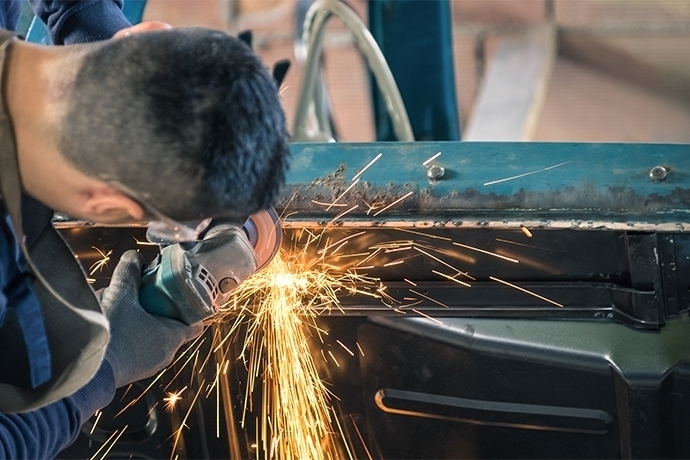Insurance and Body Shops Part II: The Fine Line of Communication in DRP

For nearly as long as cars have been sold in America, auto insurance has also been sold – and recently mandated. While these two businesses work in tandem, they also have a history of conflict. In this two-part series, we’ll explore some of the issues that arise between body shops and insurance companies and the effect of those issues on shop owners and consumers.
In Part I, we explored the considerations a shop owner makes when deciding whether to join a Direct Repair Program (DRP). However, all shop owners – in DRPs and not – must work with insurance companies on a regular basis. In Part II, we’ll look at more general issues that may arise between shop owners and insurance companies when negotiating repairs and covering costs.
When a car is brought in for repairs, an estimate is completed for the work including the parts needed to fix the vehicle. Once completed, the estimate is sent to the customer’s insurance company and negotiations begin.
“We want body shops to be trained experts in presenting the best estimate to insurance companies and not falling prey to the pressure of ‘getting the sale’ with the customer,” said Paul Rinaldi, FinishMaster Sales Manager. “Once the estimate is presented, the body shop must remain diligent in negotiations with the insurance companies to ensure pre-accident condition repairs are approved and the best work is done.”
Issues can arise when body shops hold themselves to the highest industry standards and insurance companies do not align on the repair estimate.
“It’s a tight rope,” said Paul. “The body shop wants to make sure the customer is happy and the car is returned to pre-accident condition, but they’re also negotiating with the insurance company who provides a big portion of their business and ultimately pays for the repair.”
It’s a delicate balance and the pressure to maintain that balance between the customer and insurance company can lead some body shops to cut corners to meet the amount the insurance company is willing to pay.
“Customers get the short end of the deal sometimes if the body shop and insurance companies do not work together or do not already have a DRP in place,” said Dennis Seaver, FinishMaster Sales Manager. “The constant challenge of the body shop manager is to balance doing the right repair for the customer while earning reasonable profitability for the business”
While it can be challenging to manage DRP, insurance companies do not dispute all estimates and negotiation can be brief depending on the customer’s policy and the insurance company’s arrangement with the body shop. Belonging to a DRP is one way to save time in negotiations as there are pre-established repair coverages in place.
When it comes to the replacement parts used in repairs, some insurance policies require only OEM parts as opposed to aftermarket, which also saves time. As more manufacturers come out with their own guidelines for collision repairs, such as Honda’s recent Collision Repair Position Statement, these built-in specifications may become more common.
“Almost every manufacturer has specs,” said Paul. “Body shops must meet those specs in repairs, otherwise manufacturers won’t honor the warranties anymore.” This means less negotiation over the cost of the repair and more focus on following the right process to get the car back to pre-accident condition.
Ultimately, car repair is a three-party operation. The body shop serves the customer but also must answer to insurance companies, and insurance companies provide coverage for the customer but negotiate with body shops.
One of the biggest opportunities is to educate the consumer. They need to understand their own policy and the choices they have during the process to get their vehicle repaired. Accidents are traumatic events and knowing the process up front means a better experience and higher quality repair.
In the end, it is important for all three parties to remain educated about the industries and issues at play when it comes to repairs needed. Educated consumers can request certain replacement parts for their cars; body shops can use collision repair estimating system reports, such as Mitchell, to back up negotiations with insurance companies; and insurance companies can hire informed adjusters who understand and uphold the necessary standards for car repairs. When every party does their part, the process can be a winning system.
